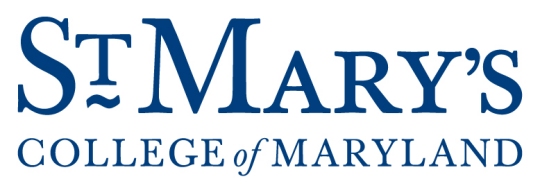
St. Mary's College of Maryland Ranks No. 1 Among Peace Corps' Top Volunteer-Producing Small Colleges
In its 2018 Top Volunteer-Producing Colleges and Universities list, the Peace Corps announced this week that St. Mary's College of Maryland is ranked no. 1 among small schools.
This is the second consecutive year St. Mary's College of Maryland has ranked among the top five small-sized schools. SMCM ranked No. 4 last year.
"Peace Corps service is a profound expression of the idealism and civic engagement that colleges and universities across the country inspire in their alumni," said Acting Peace Corps Director Sheila Crowley.
The Peace Corps was established in 1961. Since that time,141 alumni of St. Mary's College have served in countries around the world.
Jacob Bernhardt '16 is currently serving in Indonesia as an English teacher.
"While a student at St. Mary's, I was a part of the Paul H. Nitze Scholars program, focused on leadership in a global setting. As a Nitze Scholar, I traveled to South Africa as part of a class focusing on South Africa's recovery post-Apartheid. I also went with my tropical biology class to Belize. These experiences helped broaden my horizons and made me consider a post-graduate path outside of the United States," he said.
The Peace Corps ranks its top volunteer-producing colleges and universities annually according to the size of the student body. The agency lists the 2018 rankings of the top 25 schools in each category and an interactive map that shows where alumni from each college and university are serving.
Maryland ranks No. 10 among top states sending volunteers to Peace Corps with 250 currently serving volunteers and 6,231 serving all-time.
Agencies Align on Education: Naval Surface Warfare Center Indian Head Explosive Ordnance Disposal Technology Division, St. Mary's College of Maryland, and The Patuxent Partnership sign educational partnership agreement
The Naval Surface Warfare Center Indian Head Explosive Ordnance Disposal Technology Division, St. Mary's College of Maryland, and The Patuxent Partnership formalized an educational partnership agreement that will advance scientific research and foster academic growth in science, mathematics, technology, and engineering. Representatives from those organizations gathered on the College campus Friday, March 23, to sign the agreement.
The signers included Tuajuanda C. Jordan, St. Mary's College president; NSWC IHEODTD Commanding Officer Capt. Scott Kraft and Technical Director Ashley Johnson, and Bonnie Green, executive director, The Patuxent Partnership, a non-profit member organization that works with government, industry, and academia to advance technology-related education and workforce development.
"Often, success is determined by the connections we make and the partnerships we establish," said Jordan. "This agreement will enable our students and faculty to collaborate with industry experts and gain practical, hands-on skills that will give them a competitive edge in the marketplace."
"This partnership is just another example of how we can leverage the knowledge around us in Southern Maryland to enhance energetic materials and systems to better support the Navy," said Johnson.
"By providing opportunities at Indian Head for their research scientists and engineers to work with SMCM students and faculty, this agreement will strengthen and support the recruitment process and strengthen STEM workforce development," said Green. "There will be additional opportunities for SMCM students to conduct research, work as interns, and pursue potential career opportunities. The Patuxent Partnership will foster these connections, identifying opportunities for students and faculty, and providing visibility and support."
"We are excited about this partnership and look forward to sharing our knowledge and expertise while attracting top-notch potential employees," said Kraft. "We will also benefit from our partners' expertise allowing us to boost our capabilities, products and services to the warfighter."
The agreement will also provide educational and research experiences for St. Mary's College students and faculty using expertise, unique facilities, equipment and technology. Furthermore, the agreement will facilitate student internships, particularly in fields relating to the real-world technical applications required by the U.S. Navy.
St. Mary's College of Maryland Joins American Talent Initiative, Aiming to Educate More High-Achieving, Low-and Moderate-Income Students
St. Mary's College of Maryland announced today that it has joined the American Talent Initiative (ATI), partnering with top-performing institutions to commit to the collective goal of enrolling 50,000 additional talented, low- and moderate-income students at colleges and universities with strong graduation rates by 2025. As part of ATI, a Bloomberg Philanthropies initiative led by the Aspen Institute's College Excellence Program and Ithaka S+R, St. Mary's College will develop strategies to attract, enroll, and support more high-achieving, lower- and moderate-income students from before they arrive on campus to graduation and beyond.
Launched in December 2016 with 30 institutions, ATI member institutions must meet the standard of graduating at least 70 percent of their students in six years. Membership in ATI now includes the entire Ivy League, 17 state flagship universities, and private colleges.
"At St. Mary's College of Maryland, we acknowledge the changed demographic in our country, the fact that we, as a people, are much more diverse than in years past," said Tuajuanda C. Jordan, president. "Not only is joining the American Talent Initiative the right thing to do, it helps ensure our College is on a path that will enable us to thrive in the present and future. Diversity and inclusion are no longer optional; they are imperative."
St. Mary's College has several initiatives in place to help increase diversity among the student body including the DeSousa-Brent Scholars program and the First-Generation Student Initiative.
St. Mary's College's DeSousa-Brent Scholars program actively recruits students from groups underrepresented in higher education. The program provides each scholar supplementary and preparatory courses, regular motivational events, and individual mentoring to cultivate their academic and leadership potential.
Established in 2017 by President Jordan, the First-Generation Student Initiative enables students who are the first in their families to attend college to be a part of a network of support from their parents and other first-generation students and faculty. Students and parents meet with first-generation faculty to discuss various topics, including: the importance of out-of-class experiences, how to identify/apply/afford college, work-life balance, and career paths.
As part of the national effort to increase opportunity for talented, low- and moderate-income students at top-performing colleges and universities, all member institutions are implementing several strategies designed to attract, enroll and graduate high-achieving, lower-income students, including:
• Identifying talented students through better recruitment of qualified high school graduates and high-achieving transfer students from community colleges and other schools;
• Increasing the number of applications from Pell-eligible students, the number of Pell-eligible students who are enrolled, and the number of first-generation students enrolled;
• Prioritizing need-based aid to make attendance more affordable; and
• Retaining and graduating lower-income students at rates comparable to their higher-income peers.
At this time, approximately 290 colleges and universities nationwide achieve a graduation rate of 70 percent of their students in six years. The initiative aims to increase the total number of low- and moderate-income students enrolled at these institutions by 50,000 - from about 480,000 to 530,000 students - by 2025. Member institutions of the American Talent Initiative commit substantial resources to increase opportunity for lower-income students, as well as collect institutional data which will be annually published to assess their aggregate progress toward meeting the 50,000-by-2025 national goal.
Asst. Prof. Malisch Offers Solutions to the Conference-Childcare Conundrum as a Mother in Science
Jessica L. Malisch, St. Mary's College assistant professor of biology, was a member of a working group of academic mothers who, with lead writer Rebecca M. Calisi (University of California), compiled a list of methods for conference organizers to facilitate attendance at conferences by primary caregivers.
"This was an important collaborative project conducted by 46 mothers in academia who noticed the challenges of conference attendance imposed on primary caregivers and how this was disproportionately affecting early career females," said Malisch.
One major challenge is referred to as the childcare–conference conundrum. According to the article, "Parent-researchers face a conundrum as they struggle to attend key conferences and further their careers while finding care for their children. Conferences face a conundrum as they assess how to better accommodate mothers and families."
Research showed that primary caretakers face hurdles if they wish to attend and participate in conferences because of responsibilities related to pregnancy, breastfeeding, and caretaking.
According to the article, "Research reveals that this "baby penalty" negatively affects women's, but not men's, career mobility, with even larger penalties for women of color."
"We wanted to not only raise awareness but provide tangible solutions to conference organizers to improve equity and reduce the gender gap in academia," said Malisch.
Some of those solutions include, organizations allocating funds in order to support efforts of parents or offer discount registration to parents who can attend only a portion of the conference. If parents wished to bring a caregiver, organizations could support the caregivers financially and logistically by offering grants to fund travel and housing for a caregiver.
Many more solutions are included in the full article, available for viewing at Proceedings of the National Academy of Sciences of the United States of America http://www.pnas.org/content/early/2018/03/01/1803153115.
St. Mary's College Asst. Prof. Gurbisz Co-authors Report on the Effects of Nutrient and Stormwater Reduction in the Chesapeake Bay
Assistant Professor of Environmental Studies Cassie Gurbisz was among 14 co-authors of a new research article published this week in the Proceedings of the National Academy of Sciences.
The article reports the positive impact of long-term nutrient reductions on an important and valuable ecosystem in the Chesapeake Bay. Scientists indicate the resurgence of underwater grasses supports nutrient reductions from EPA's Total Maximum Daily Load (TMDL). This, along with conservation incentives, has resulted in a healthier Chesapeake Bay.
Jonathan Lefcheck, PhD, formerly of the Virginia Institute of Marine Science and now at the Bigelow Laboratory for Ocean Science, along with Gurbisz and 12 co-authors, shows that a 23 percent reduction of average nitrogen levels in the Bay and an eight percent reduction of average phosphorus levels have resulted in a four-fold increase in abundance of Submerged Aquatic Vegetation (SAV) in the Chesapeake Bay. This ecosystem recovery is an unprecedented event; based on the breadth of data available and a sophisticated data analysis, this is the biggest resurgence of underwater grasses ever recorded in the world.
The researchers employed advanced analytical tools to definitively show how the reduction of excess pollutants like nitrogen and phosphorus are the cause of this ecosystem recovery. To link land use and Chesapeake Bay status, researchers analyzed data in two different ways: one focusing on the cascade of nutrients from the land to the waterways, and one showing what happens to SAV once the nutrients are in the water.
Gurbisz said she participated in a series of workshops with scientists who study various aspects of SAV ecology. She said she helped develop the conceptual basis of the project and was excited that the work generated relevant results related to restoring the Chesapeake Bay.
The published findings are a collaborative effort between the following agencies: Virginia Institute of Marine Science, University of Maryland Center for Environmental Science, Environmental Protection Agency Chesapeake Bay Program, U.S. Geological Survey, National Socio-Environmental Synthesis Center, St. Mary's College of Maryland, Smithsonian Environmental Research Center, Maryland Department of Natural Resources, and Texas A&M University-Corpus Christi.

